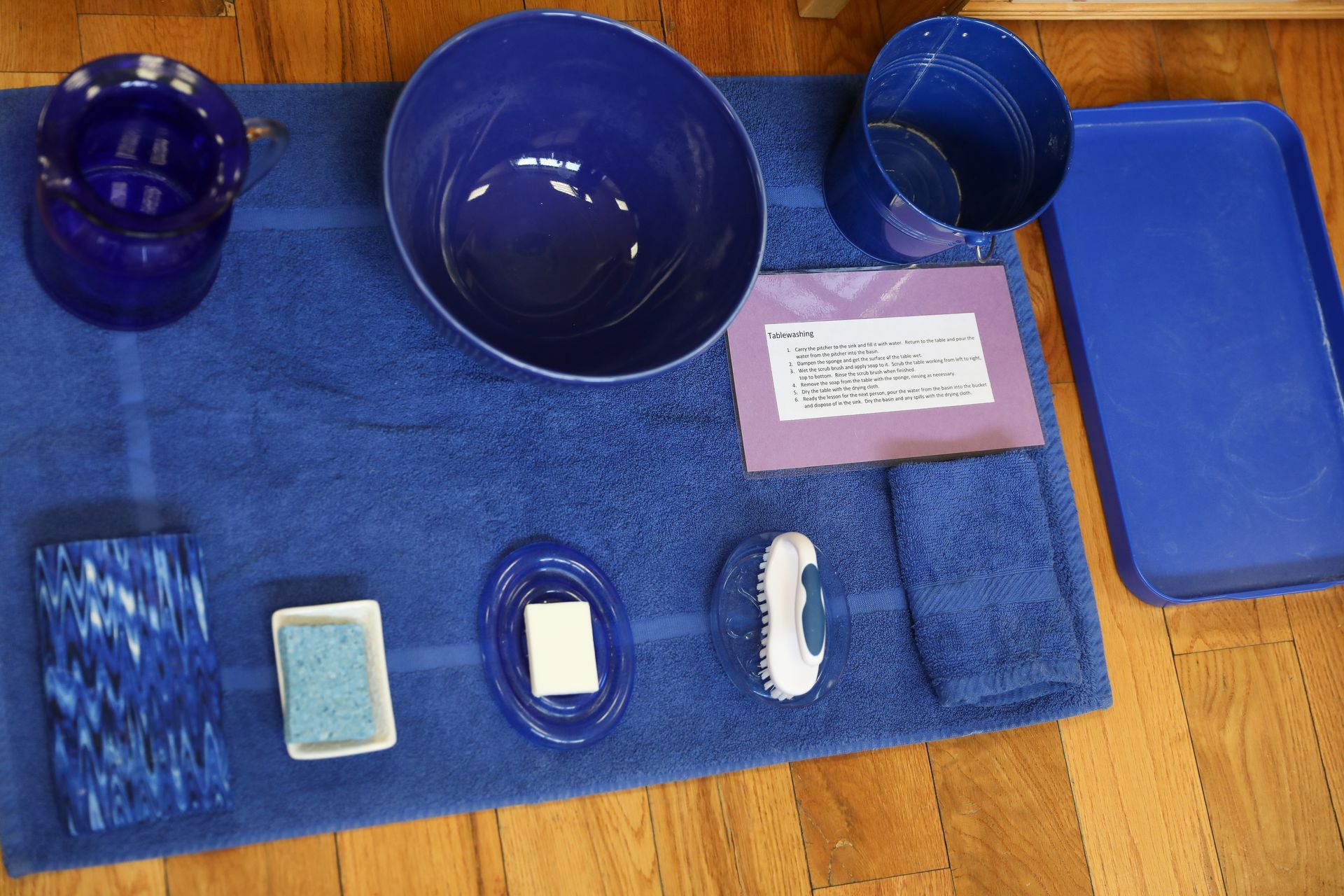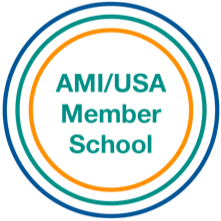
Mornings in a prepared Montessori environment are such a special time. Each day, upon arrival, the guides work with loving diligence to ensure each material is in impeccable order to begin the day. This preparation is done with mindful intention; ensuring each child’s need for order is being respected. It is a reverent time - a time for the guide to not only prepare the physical environment, but also to prepare mentally for the joys and challenges of the day.
The morning arrival of children is considered a sacred time in the Casa. This time is just as important to the adults as it is to the children. In this world of hustle and bustle, this is an opportunity to hang troubles on the hook outside the door, and welcome each child with our whole heart; a time to be absolutely present.
This is an incredibly busy life. The day, for many families, consists of both parents working demanding jobs, soccer practice, piano lessons, tutoring, martial arts, religion classes, etc. Even if this is not exact, there is some variation of our days and nights being very full, and very busy. This hectic pace can tend to run into the morning; making us feel rushed and unprepared to get out the door on time. In spite our best efforts to plan, mornings can be a time of stress and unforeseen little crises. Shoes and coats are suddenly missing, the dog got out the door, the baby has a fever, on and on.
Morning greeting offers an opportunity to reset. As the children arrive, two adults are present at the door to welcome them into the building. One adult will typically help the child inside, as the other chats a bit with mom, dad, grandma etc, gathering gear and collecting any vital information to pass along to the guide: someone has been sick, someone had a late night, someone wasn’t hungry, and so forth. This information will be delivered via note, hung on a cork board so as not to interrupt the ritual of the morning greeting. Upon entering the building, each child has a hook and a bag labeled with their name to organize their belongings; again, calling to their need for order. Children love recognizing their names, and the peace that comes with the responsibility of caring completely for their own gear. Older children take such pride in helping the younger children to recognize their names and help them to get their items organized in the bags. When this is complete, the children are ready to enter their prepared environment.
Each morning, teacher and assistant are seated peacefully in chairs on either side of the room. As the children enter, we take time to genuinely connect to each and every child. We shake hands while making eye contact and greet them with grace, “Good morning, I am so glad to see you today. I am so glad you are here.” This is done in earnest; each day is a new day. Many children will share a story from home, some are feeling joyful, some are sad and wish to remain by our sides for a time to have a moment to collect themselves prior to beginning the day. This is a time of absolute peace. The children know this time is completely for them. In a world where adult conversation is often considered to take precedence or come prior to listening to the words of children, this time and space is secured. In a digital age that can condition adults to feel each communication is an emergency, that each email and text must receive an immediate response; morning greeting is a protected time. There can be no interruption. Even if the morning prior to arrival has gone exactly to plan, and been a time of peace; the children rely on the solid routine this start to the day brings. This is a gift for child and adult alike. Punctual arrival ensures this special moment is not lost to your child.
Morning greeting also acts a vital lesson in social graces. My hopes are high that the children who have started their day in this manner will engage, shake hands, make eye contact, and listen to humanity in earnest. That each day will be a new day for them. That they will be able to set aside “emergencies” and truly be there to protect sacred moments. Morning greeting is genuinely one of my very favorite moments of my day. I genuinely thank you for sharing your children with us, and giving us the opportunity to start our days in such a beautiful way.



